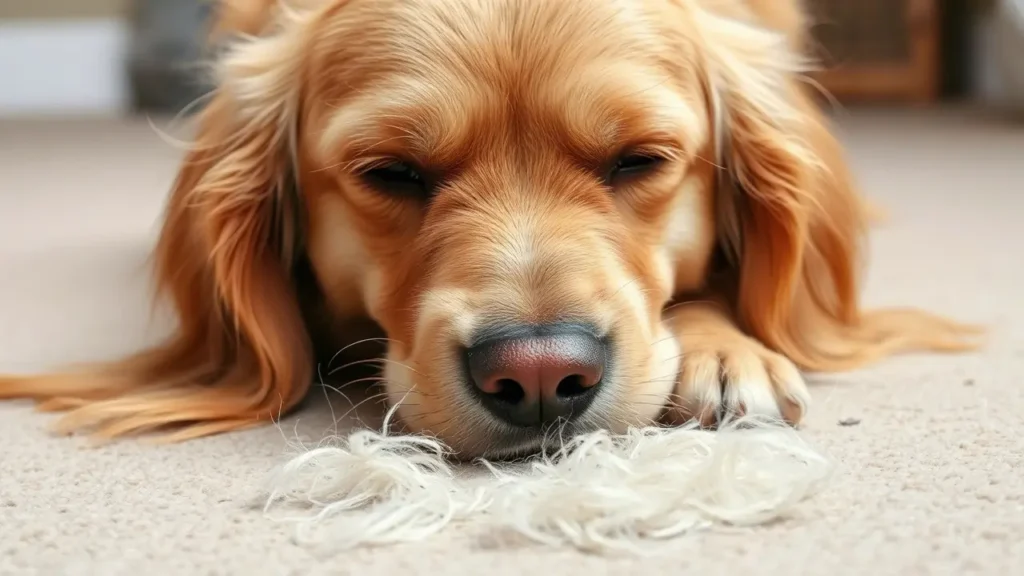Shedding season can turn your home into a furry battlefield, with pet hair clinging to every surface. This natural process can feel like a never-ending chore. However, with proactive strategies, you can manage shedding season effectively, keeping your home clean, your pet comfortable, and your sanity intact. This comprehensive guide dives into practical tips, tools, and insights to help you navigate the furry frenzy with confidence.
Understand Why Pets Shed
Shedding is a biological necessity for most pets, driven by seasonal changes, hormones, and environmental factors. In spring, dogs and cats shed their thick winter coats to stay cool in warmer weather. In fall, they shed lighter fur to grow a denser coat for winter insulation. Breeds with double coats shed more due to their thick undercoats. Single-coated breeds shed less but still contribute to the fur pile.
Beyond seasons, shedding can be influenced by:
- Diet: Poor nutrition can lead to dry skin and excessive shedding.
- Health: Skin conditions, allergies, and parasites can increase hair loss.
- Stress: Anxiety from changes in routine or environment can trigger shedding.
- Hormones: Spaying/neutering, pregnancy, and medical conditions can affect shedding patterns.
If you notice bald patches, excessive scratching, or red, flaky skin, consult a veterinarian to rule out underlying health issues. Understanding the root cause of shedding helps you tailor your approach to managing it.
Brush Your Pet Like a Pro
Regular brushing is the cornerstone of shedding control. It removes loose fur before it scatters across your home, reduces matting, and promotes a healthy coat. The right brush depends on your pet’s coat type:
For double-coated breeds, use a deshedding tool like the Furminator or an undercoat rake to remove loose undercoat fur without damaging the topcoat.
For long-haired breeds, a slicker brush or wide-tooth comb prevents tangles and catches loose hair.
A rubber grooming mitt or bristle brush works well for short-haired breeds to collect loose fur and stimulate the skin.
A pin brush or comb designed for textured coats keeps fur manageable.
Brush daily during peak shedding season (spring and fall) and 2-3 times weekly otherwise. Work in small sections, brushing in the direction of hair growth to avoid discomfort.
Use gentle strokes to prevent skin irritation, especially for sensitive pets. Reward your pet with treats or praise to make brushing a bonding experience. Clean your brush frequently to maintain its effectiveness and prevent re-depositing fur.
Brushing not only controls shedding but also distributes natural oils, keeping your pet’s coat shiny and skin healthy. For heavy shedders, consider brushing outdoors to minimize indoor cleanup.
Bathe with Purpose
Bathing loosens dead fur and cleans your pet’s coat, but overbathing can strip natural oils, leading to dry skin and more shedding. Aim for a bath every 4-6 weeks during shedding season, adjusting based on your pet’s breed, activity level, and skin sensitivity. Here’s how to make baths count:
Use a pet-safe, hypoallergenic shampoo designed for your pet’s coat type. Deshedding shampoos with oatmeal or aloe can soothe skin and reduce loose fur. Follow with a conditioner to soften the coat and minimize tangles.
Brush your pet before bathing to remove loose fur and prevent clogs in your drain. Use lukewarm water to keep your pet comfortable. Gently massage shampoo into the coat, focusing on areas prone to matting (e.g., behind ears, under legs). Rinse thoroughly to avoid residue, which can irritate skin.
Towel-dry or use a low-heat pet-safe blow dryer, then brush again to catch any loosened fur. A deshedding tool works wonders at this stage.
For cats, bathing can be trickier. If your cat resists water, try grooming wipes or a waterless shampoo to freshen their coat without the stress of a full bath. Always consult your vet before introducing new grooming products, especially for pets with skin conditions.
Master Your Cleaning Routine
Pet hair has a knack for invading every corner of your home. A strategic cleaning routine keeps shedding season under control without turning you into a full-time maid. Here’s how to stay on top of the fur:
Invest in a vacuum with a HEPA filter and pet-specific attachments, like a motorized brush head for upholstery. Vacuum carpets, rugs, and pet-frequented areas daily during shedding season. Empty the canister or change the bag frequently to maintain suction power.
Use a lint roller, pet hair remover sponge, or damp rubber glove to lift hair from sofas, chairs, and curtains. For stubborn fur, wrap packing tape around your hand (sticky side out) and pat surfaces.
Wash your pet’s bed, blankets, and crate liners weekly in hot water to remove hair, dander, and odors. Use a pet-safe detergent and dry thoroughly to prevent mold.
Sweep hard floors with a microfiber broom or use a damp mop to trap hair. Electrostatic dry cloths are great for quick cleanups.
Store delicate clothing in garment bags to avoid pet hair cling. Keep a lint roller by the door for last-minute touch-ups before heading out.
Consider a robotic vacuum for daily maintenance if your budget allows. Place pet hair-resistant throws or washable covers on furniture to simplify cleaning. By tackling high-traffic areas consistently, you’ll prevent fur from building up into an unmanageable mess.
Invest in Pet-Safe Grooming Tools and Products
The right tools make shedding season manageable. Beyond brushes, consider these grooming aids:
Deshedding sprays reduce static and loosen fur, making brushing easier. Look for natural ingredients like chamomile or coconut oil. Grooming wipes ideal for quick cleanups between baths, especially for cats and small dogs.
Flea combs are useful for checking for parasites, which can worsen shedding. Nail Clippers and Ear Cleaners: Keeping nails trimmed and ears clean reduces scratching, which can dislodge more fur.
Avoid human hair products, essential oils, or harsh chemicals, as they can irritate your pet’s skin or cause toxicity. Always test new products on a small area of your pet’s skin and monitor for reactions. If you’re unsure, ask your vet or groomer for recommendations tailored to your pet’s breed and needs.
Feed for a Healthy Coat
A nutrient-rich diet is critical for minimizing excessive shedding and maintaining a glossy coat. Poor-quality food lacking essential nutrients can lead to dry, flaky skin and increased hair loss. Here’s what to prioritize:
Found in fish oil, flaxseed, and premium pet foods, omega-3 and omega-6 fatty acids support skin health and reduce inflammation. Look for foods with salmon, sardines, or chia seeds.
Pets need animal-based proteins for strong hair follicles. Check that protein is the first ingredient in your pet’s food. Biotin, zinc, and vitamin E promote coat health. Many premium pet foods include these, but supplements may help if your vet approves.
Ensure your pet has constant access to fresh water to keep skin hydrated and prevent flaking.
Avoid feeding human foods like onions, garlic, or grapes, which are toxic to pets. If your pet’s shedding seems excessive despite a balanced diet, consult your vet about potential allergies or deficiencies. They may recommend a food trial or supplements like fish oil capsules to boost coat health.
Lean on Professional Groomers
Professional grooming can be a game-changer during shedding season, especially for heavy shedders or if you lack the time or tools to manage at home. Groomers use high-powered blowers, specialized deshedding treatments, and techniques to remove undercoat fur efficiently.
They can trim matted fur to prevent skin irritation. Check for skin issues, fleas, and ticks that might contribute to shedding. They offer breed-specific cuts to reduce shedding.
Schedule a grooming session at the start of shedding season to get ahead of the fur storm. Ask your groomer for a deshedding package, which often includes a bath, blow-out, and thorough brushing. For cats, look for groomers experienced with feline handling to minimize stress.
After the session, request maintenance tips to extend the benefits at home.
Keep Your Pet Comfortable and Stress-Free
Shedding can be physically and emotionally taxing for pets. Loose fur can cause itching, matting, or hot spots, while seasonal changes may make them feel overheated or restless. Here’s how to ensure their comfort:
During brushing, inspect for redness, scabs, or bald spots. Use a pet-safe antiseptic spray for minor irritations and consult a vet for persistent problems.
Keep your home cool in spring and warm in fall to match your pet’s shedding cycle. Avoid leaving pets in hot cars or overly heated rooms, as overheating can worsen shedding.
A clean, comfortable bed or crate reduces stress and gives your pet a safe retreat. Wash bedding regularly to remove hair and allergens.
Regular walks, playtime, and puzzle toys reduce anxiety, which can exacerbate shedding. Mental stimulation, like training sessions, also keeps your pet calm.
Changes like moving, new pets, or loud noises can increase shedding. Maintain a consistent routine and offer extra attention during transitions.
Explore Advanced Solutions
For persistent shedding challenges, consider these additional options:
A HEPA air purifier reduces airborne pet dander and hair, improving air quality for you and your pet. Place it in rooms where your pet spends the most time.
In dry climates or heated homes, a humidifier prevents skin from drying out, reducing flaking and shedding.
If you or family members are allergic to pet dander, combine frequent cleaning with antihistamines or allergy-friendly pet products. Consult a doctor for personalized advice.
For excessive shedding due to allergies, infections, or hormonal issues, your vet may prescribe medicated shampoos, antihistamines, or steroids.
Always discuss these solutions with a professional to ensure they’re safe and effective for your pet.
Stay Patient and Consistent
Shedding season is temporary, but it requires diligence to keep under control. Create a routine that fits your schedule—perhaps 10 minutes of brushing daily, vacuuming every other day, and a weekly deep clean.
Accept that some fur is inevitable, especially with high-shedding breeds, and focus on minimizing its impact rather than eliminating it entirely.
Celebrate small wins, like a cleaner couch or a happier pet after grooming. Share the workload with family members or roommates to make it manageable. If you’re feeling overwhelmed, remind yourself that shedding is a sign of your pet’s healthy adaptation to their environment—and a small price to pay for their companionship.
Shedding season doesn’t have to be a hairy ordeal. By understanding your pet’s shedding patterns, investing in the right tools, and maintaining a consistent grooming and cleaning routine, you can keep your home fur-free and your pet comfortable.




